Why Home Care Matters for Your Oral Health
Maintaining good oral health at home is vital for preventing gum disease and cavities, common issues that affect millions worldwide. By adopting effective daily routines, understanding the impact of diet, and committing to regular dental visits, you can protect your teeth and gums and keep your smile healthy for life. This article provides comprehensive home care tips, backed by expert guidance, to help you maintain optimal oral hygiene and prevent dental diseases.
Core Home Care Practices to Prevent Gum Disease and Cavities
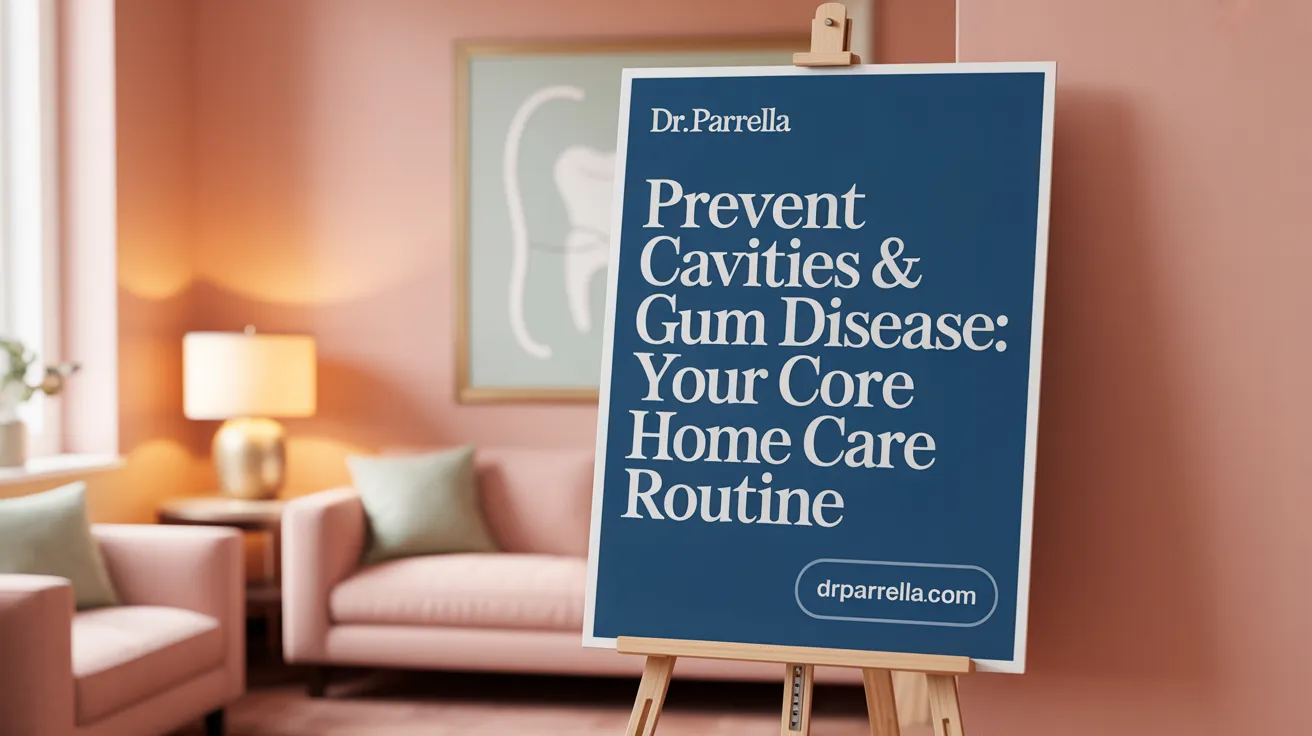 Maintaining healthy teeth and gums requires diligent daily practices. The most effective home measures include brushing your teeth twice a day with fluoride toothpaste, spending at least two minutes each session to ensure thorough cleaning. Proper technique involves gentle, circular motions with a soft-bristled toothbrush held at a 45-degree angle to the gum line, helping to remove plaque efficiently.
Maintaining healthy teeth and gums requires diligent daily practices. The most effective home measures include brushing your teeth twice a day with fluoride toothpaste, spending at least two minutes each session to ensure thorough cleaning. Proper technique involves gentle, circular motions with a soft-bristled toothbrush held at a 45-degree angle to the gum line, helping to remove plaque efficiently.
Equally important is daily flossing or using interdental cleaning tools, which reach the spaces between teeth where brushes can't access. This removes plaque buildup and food debris, reducing the risk of cavities and gum inflammation.
In addition, incorporating an antimicrobial or fluoride mouthwash into your routine can lower bacteria levels, freshen your breath, and support gum health. Adapting a balanced diet low in sugary and acidic foods also plays a crucial role; limiting sugar reduces harmful acids that attack enamel, while a diet rich in fruits, vegetables, and lean proteins boosts your overall oral immunity.
Staying well-hydrated by drinking plenty of water stimulates saliva production, which naturally cleans the mouth and neutralizes acids. Avoiding tobacco products—smoking or smokeless—significantly decreases your risk of gum disease, delays healing, and prevents staining.
Lastly, scheduling regular dental checkups and professional cleanings every six months helps catch early signs of problems, remove hardened plaque (tartar), and tailor ongoing care. These combined practices are essential in preventing oral health issues and maintaining a healthy smile.
Detailed Oral Hygiene Routines and Techniques for Effective Prevention
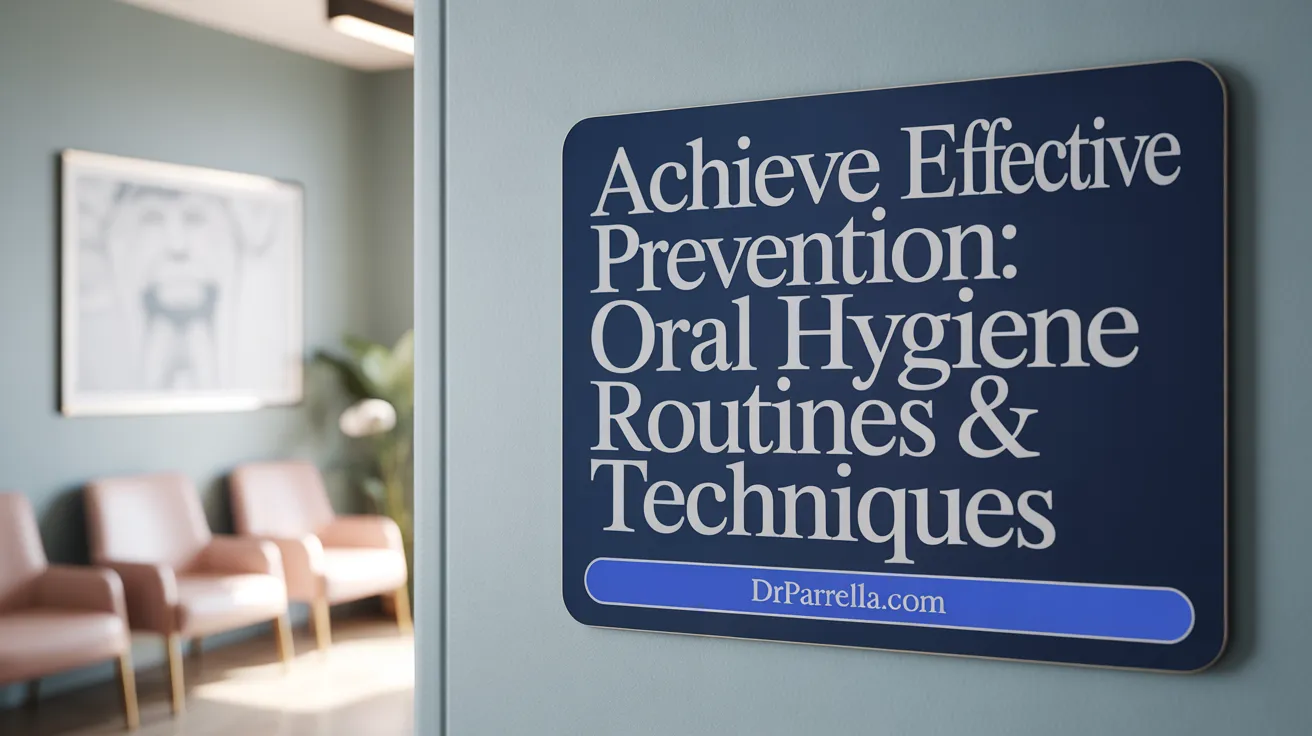
What effective oral health routines and techniques can be followed for prevention?
Maintaining good oral hygiene involves a combination of proper brushing, flossing, mouth rinsing, and regular dental visits. Brushing twice daily with a fluoride toothpaste and a soft-bristled toothbrush is fundamental. Use gentle, circular motions and tilt the brush 45 degrees towards the gum line to effectively remove plaque along the gum margins. Each brushing session should last at least two minutes to ensure thorough cleaning.
Flossing is equally important; it should be done at least once daily by sliding a waxed thread gently between teeth. Curve the floss into a C-shape around each tooth, gently cleaning along the gumline and in between teeth to remove plaque and food debris that brushing alone cannot reach. Alternative interdental cleaning tools, such as interdental brushes, can be effective depending on individual needs.
Using an antibacterial, alcohol-free mouthwash can help decrease bacteria in the mouth, reducing plaque build-up and gingivitis. Incorporating tongue cleaning by gently scraping or brushing the tongue can significantly cut down bacterial load, which contributes to bad breath and bacterial growth.
Replacing your toothbrush every three to four months ensures the bristles remain effective in cleaning. Powered toothbrushes can enhance plaque removal, especially for those with limited manual dexterity or orthodontic appliances. They often have timers to help ensure a full two-minute brushing session.
Regular dental checkups every six months enable early detection of problems like gingivitis or cavities. Combining these routines with a balanced diet low in sugary and starchy foods further protects teeth and gums. Avoiding tobacco products and managing any chronic health conditions, such as diabetes, also play vital roles in oral health maintenance.
In summary, a comprehensive routine that includes proper brushing, daily flossing or interdental cleaning, mouth rinsing, tongue cleaning, regular professional visits, and healthy dietary choices forms the foundation for effective prevention of oral health issues.
The Role of Education in Sustaining Home Oral Hygiene
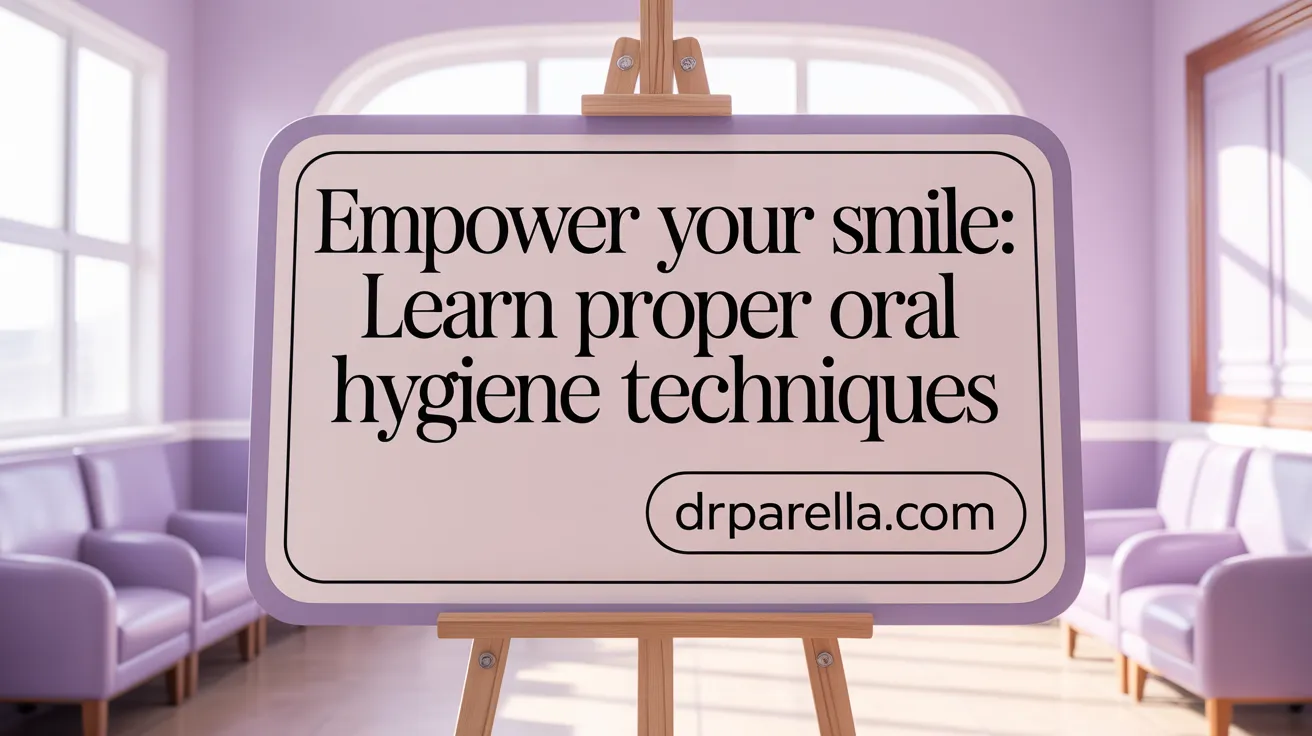 Maintaining good oral health at home involves more than just daily habits; education plays a vital role in ensuring these habits are effective and sustainable. Proper guidance helps individuals understand the correct techniques for brushing and flossing. For example, brushing should involve gentle, circular motions at a 45-degree angle to the gum line, covering all surfaces of the teeth and tongue. Flossing, on the other hand, requires sliding the waxed thread into the spaces between teeth and curving it into a C-shape to clean under the gum line.
Maintaining good oral health at home involves more than just daily habits; education plays a vital role in ensuring these habits are effective and sustainable. Proper guidance helps individuals understand the correct techniques for brushing and flossing. For example, brushing should involve gentle, circular motions at a 45-degree angle to the gum line, covering all surfaces of the teeth and tongue. Flossing, on the other hand, requires sliding the waxed thread into the spaces between teeth and curving it into a C-shape to clean under the gum line.
Knowledge of routine practices, such as brushing twice daily with fluoride toothpaste for at least two minutes and flossing once a day, is essential for preventing cavities and gum disease. Regular dental checkups also play an important part in maintaining oral health, allowing dentists to detect problems early and provide professional cleanings that remove stubborn plaque and tartar.
Educational programs can motivate individuals by demonstrating how effective home care prevents costly treatments later. Using visual aids, interactive tools, and personalized guidance, these programs encourage adherence to daily routines and promote healthier choices. Information about the impact of diet, like reducing sugary snacks and increasing intake of nutrient-rich foods such as fruits and vegetables, further reinforces good dental hygiene.
Empowering people with appropriate tools—such as timers for brushing duration, fluoride rinses, and interdental brushes—helps reinforce proper techniques and makes routine care easier. When individuals understand the connection between their daily habits and overall health, including the risk reduction for systemic conditions like heart disease, their motivation to maintain proper oral hygiene increases.
In summary, education and guidance are fundamental in fostering lifelong habits for oral health. They equip individuals with the knowledge, skills, and confidence needed to take charge of their dental care at home, ensuring healthier teeth and gums for life.
Dietary Influences on Oral Health and Practical Nutritional Tips
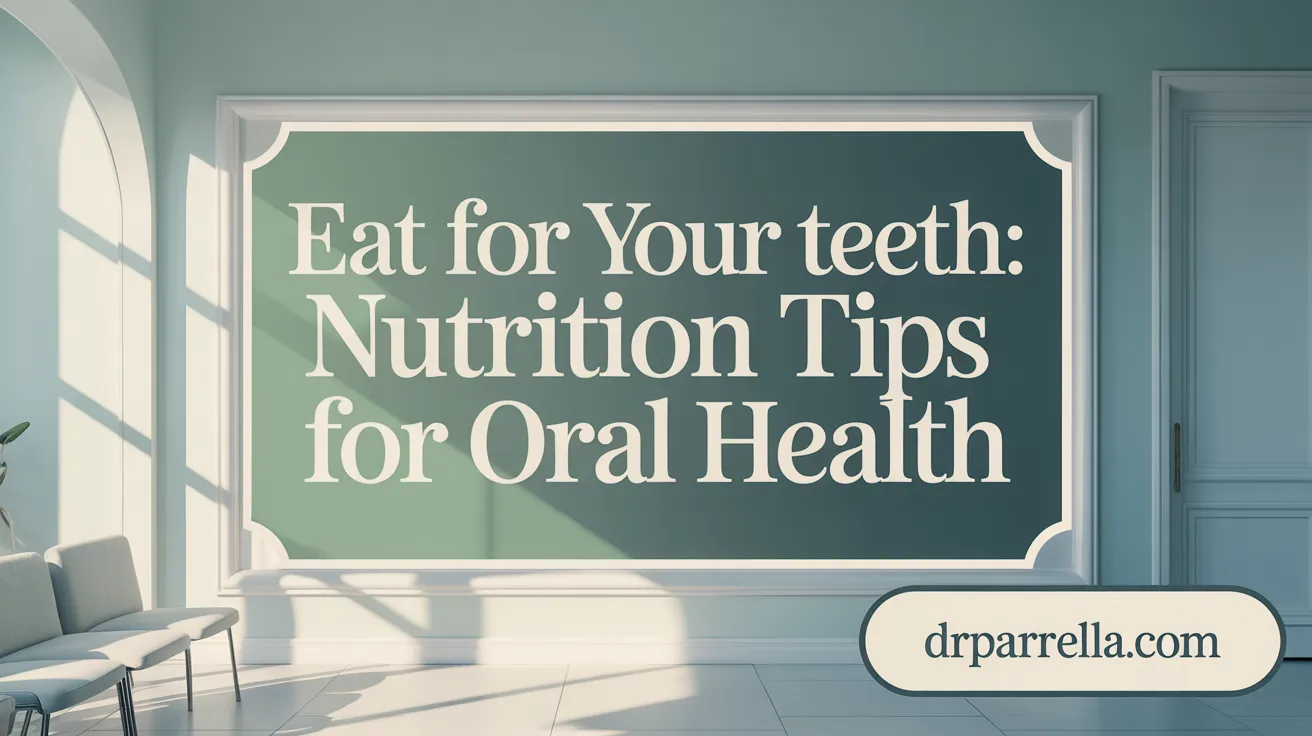
How does sugar and starch impact cavities?
Sugar and starchy foods feed bacteria in the mouth, leading to acid production that erodes tooth enamel and causes cavities. Frequent snacking on these foods creates more acid attacks, increasing the risk of decay.
What are the benefits of a balanced diet rich in fruits, vegetables, and proteins?
A nutritious diet boosts immune health and provides essential vitamins, like vitamin C, which helps repair gum tissues and fight infections. Whole grains, lean proteins, and dairy support overall dental health by strengthening enamel and tissues.
How do crunchy foods contribute to oral health?
Eating crunchy fruits and vegetables stimulates saliva flow, which naturally cleans teeth and neutralizes acids. Their abrasive texture also helps remove plaque and food debris from teeth surfaces.
Why limit sugary drinks and snacks?
Beverages like soda, flavored milk, and fruit juices are high in sugar, which promotes plaque acid formation. Sipping these throughout the day prolongs acid exposure, increasing the risk of cavities and erosion.
How does hydration support oral tissues?
Drinking plenty of water helps produce saliva, which naturally washes away food particles and neutralizes harmful acids. Staying hydrated prevents dry mouth—a condition that increases decay risk—and keeps oral tissues healthy.
Practical tips for maintaining oral health
- Brush twice daily with fluoride toothpaste for at least two minutes.
- Floss daily to remove plaque and debris between teeth.
- Visit your dentist every six months for checkups and professional cleanings.
- Consume a diet rich in fresh fruits, vegetables, proteins, and whole grains.
- Limit sugary snacks and drinks, and opt for healthier alternatives like cheese, nuts, or tea.
- Drink fluoridated water and consider using fluoride rinses for added protection.
- Avoid tobacco products to reduce gum disease and oral cancer risks.
By integrating these practices, you can significantly reduce the risk of cavities, gum disease, and other oral health problems, supporting your overall well-being.
Managing Common Oral Health Challenges at Home: Dry Mouth and Denture Care
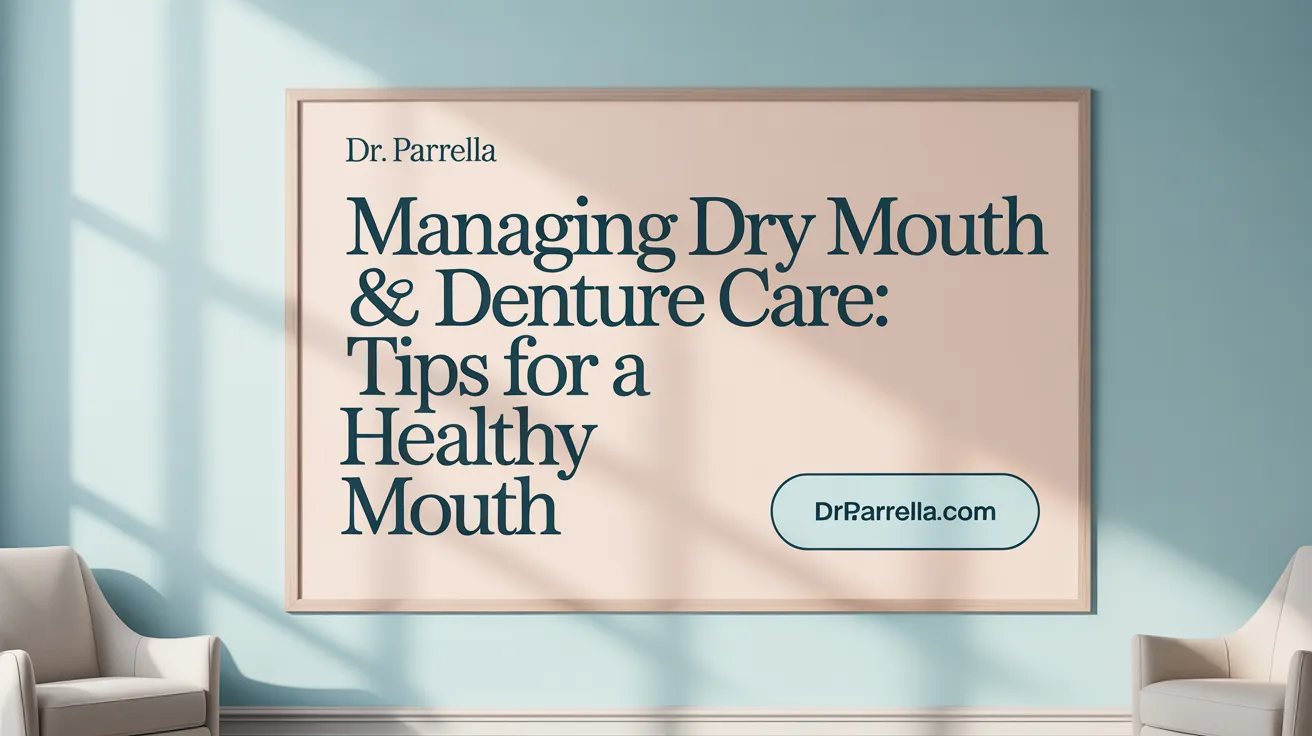
Risks associated with dry mouth
Dry mouth, or xerostomia, increases the risk of tooth decay and cavities because saliva plays a crucial role in neutralizing acids and washing away bacteria. When saliva production is reduced, harmful bacteria can thrive, leading to quicker plaque buildup and oral infections.
Hydration and irritant avoidance
To manage dry mouth, it is important to sip water regularly throughout the day, especially after meals. Avoiding irritants such as tobacco, alcohol, and caffeinated beverages can also help maintain moisture in the mouth and reduce discomfort.
Proper denture hygiene routines
Daily cleaning of dentures is essential to prevent oral infections and bad odors. This includes brushing dentures with a soft brush and non-abrasive cleanser, soaking them overnight in a denture cleaning solution, and rinsing thoroughly before wearing them again.
Seeking professional care for complications
If you experience persistent soreness, irritation, or changes in your oral tissues, consult your dentist. Proper professional assessment and tailored advice can prevent more serious conditions and ensure your dentures and mouth stay healthy.
Maintaining good hydration, avoiding irritants, and following a diligent denture cleaning routine are vital steps to preserve oral health when managing dry mouth and denture care.
Recognizing and Responding to Early Signs of Gum Disease
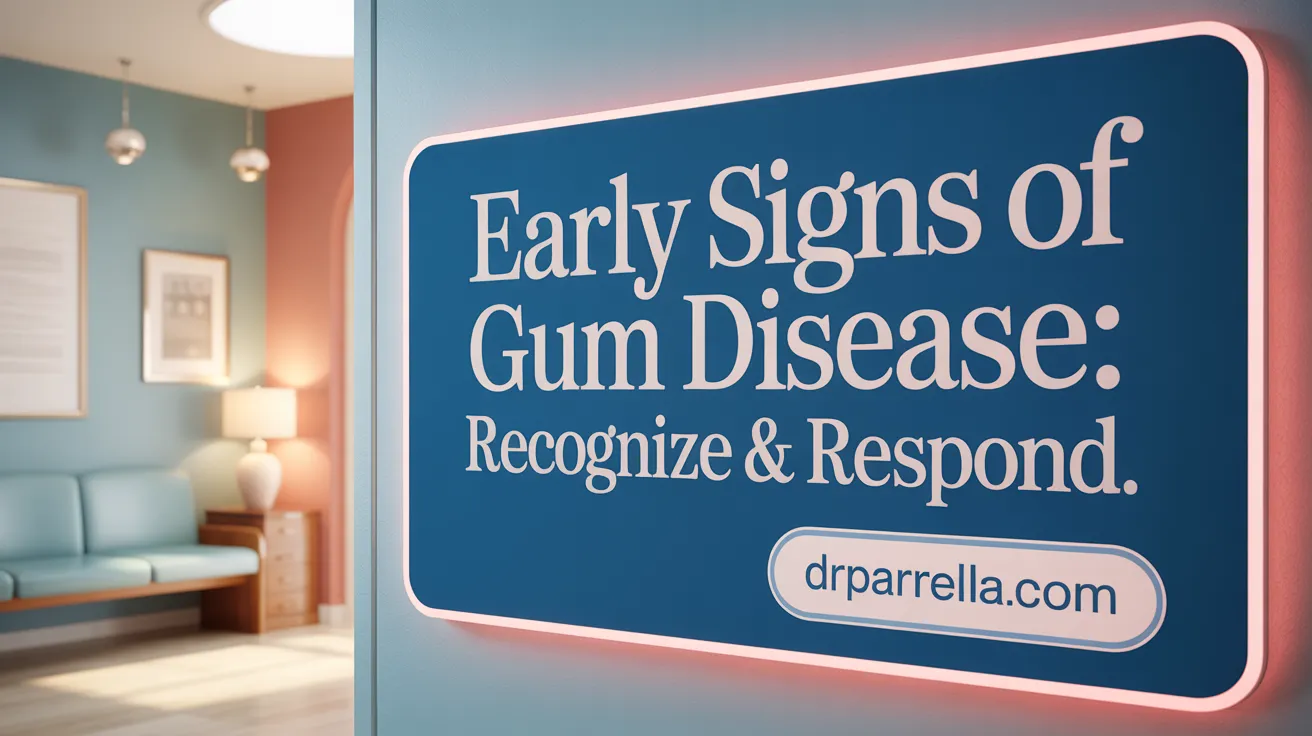
How can you identify early symptoms of gingivitis?
Early gum disease, known as gingivitis, often presents as red, swollen, and tender gums that may bleed during brushing or flossing. You might notice persistent bad breath or gums pulling away from your teeth. These signs indicate inflammation caused by plaque buildup along the gum line.
What are the differences between gingivitis and periodontitis?
Gingivitis is the initial, reversible stage of gum disease characterized by inflammation without damage to the underlying bone. If left untreated, it can progress to periodontitis, which involves the destruction of bone and tissues supporting the teeth. Periodontitis can cause loose teeth and requires more complex treatment.
Why is early intervention with a dentist important?
Detecting gum problems early allows for simple, effective treatments like professional cleanings and improved home care. Prompt action can prevent progression to more severe stages, reducing the risk of tooth loss and systemic health issues. Regular dental visits are crucial for monitoring gum health.
How does smoking affect gum healing?
Smoking significantly hampers the healing process of gums. It weakens the immune response, making it harder for the gums to recover from inflammation or injury. Smokers are at higher risk for developing gum disease and experiencing more severe progression than non-smokers.
| Symptom | Description | Impact on Gum Health |
|---|---|---|
| Red, swollen gums | Gums appear inflamed and tender | Sign of gingivitis, can progress if untreated |
| Bleeding on brushing/flossing | Gums bleed easily during cleaning | Early warning of gum inflammation |
| Persistent bad breath | Continual foul odor in mouth | Indicates bacterial growth beneath the gums |
| Gums pulling away from teeth | Recession of gum tissue | Precursor to periodontitis, may lead to tooth loss |
| Loose or separated teeth | Teeth feel wobbly or move | Advanced gum destruction requiring urgent care |
Maintaining good oral hygiene, visiting the dentist regularly, and avoiding tobacco use are essential steps for preventing and managing early gum disease. Recognizing symptoms early ensures timely intervention, saving your teeth and overall health.
The Importance of Regular Dental Visits and Professional Cleanings
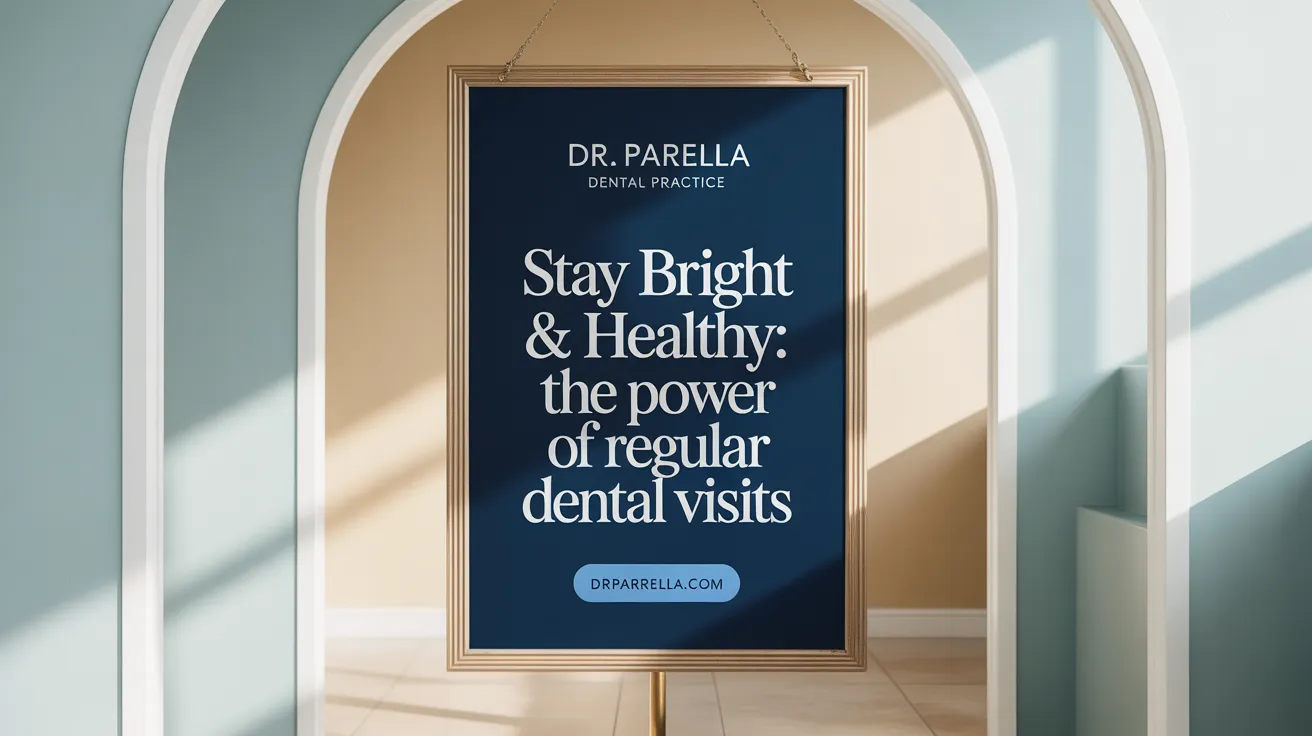
Role of professional cleanings in preventing gum disease and cavities
Regular dental checkups and professional cleanings are vital for maintaining oral health. Dentists remove plaque and tartar that daily brushing and flossing might miss, especially in hard-to-reach areas.
Removing plaque and tartar buildup
Plaque is a sticky film made of bacteria, food particles, and saliva. When not removed, it hardens into tartar, which can lead to cavities and gum disease. Professional cleanings effectively eliminate this buildup and help prevent serious dental issues.
Early detection of oral health problems
During routine visits, dentists can identify early signs of issues such as gingivitis or oral cancer. Early detection allows for prompt treatment, reducing the risk of tooth loss and more complex health problems.
Customization of prevention plans based on individual risk
Dentists assess each person’s unique risk factors, like dry mouth or smoking habits, and create personalized prevention strategies. This targeted approach helps maintain optimal oral health and prevents future problems.
| Aspect | Description | Additional Details |
|---|---|---|
| Cleanings | Remove plaque/tartar | Critical for plaque control that brushing alone can’t achieve |
| Disease Detection | Spot early gum disease and oral cancers | Enables early intervention to avoid complications |
| Prevention Strategy | Tailored advice based on risk factors | Includes diet, hygiene routines, and professional treatments |
Regular dental visits, roughly every six months, are essential for early problem detection and effective prevention. These appointments support both oral and overall health, ensuring a brighter, healthier smile.
Commit to Effective Home Care for Lifelong Oral Health
Preventing gum disease and cavities starts with consistent, effective home care combined with professional dental support. By adopting proper brushing and flossing techniques, incorporating healthy dietary habits, staying hydrated, avoiding harmful habits like tobacco use, and visiting the dentist regularly, anyone can maintain healthier gums and teeth well into the future. The knowledge and practices outlined here empower you to take control of your oral health, reduce risks of common dental problems, and enjoy the benefits of a confident, healthy smile throughout your life.
References
- Taking Care of Your Teeth and Mouth
- Your Dental Health & Home Care Tips
- The Foundational Role of Home Care for Long-Term ...
- Home Oral Care
- 10 Ways to Prevent Gum Disease at Home
- Preventing Dental Disease | Health & Human Services
- Oral Health Tips for Adults
- Oral Hygiene: Best Practices & Instructions for Good Routine
- 5 Tips to Step Up Your Home Dental Care
